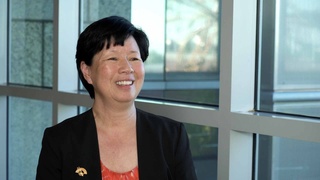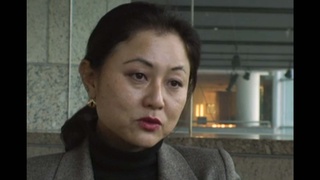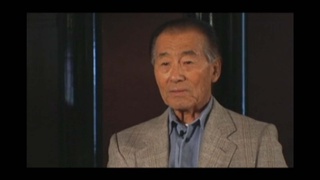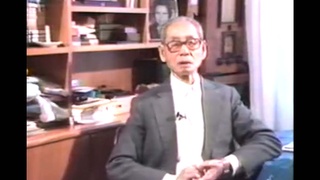Interviews
Devastation in Tokyo after World War II
The devastation, well, we both saw it -- we saw it both in Manila and in Japan, especially Tokyo, Yokohama, and Osaka, too. These are major cities that were devastated. And you see blocks and blocks of nothing but torn buildings, bricks, devastation very clearly. And I was amazed, we should have known better, but here, what was I, a twenty-year-old or whatever. We should have been more thoughtful, I guess. But I remember the first night we got into town, into Tokyo, my friend and I were, by the time the airplane found the airfield and we got into town, we were, one of the few buildings standing was the Morinaga Building, right next to Hibiya Park, Hibiya Koen, in the middle of Tokyo. So we go out in the streets, and we're hungry, so we see this policeman, and we says, Hey, is there any restaurant open around here? He just laughed at us. He said, "You bombed the heck out of us. We don't have food, let alone restaurants that are open." We should have known better. And it was really a sad situation for the Japanese.
Date: March 19, 2004
Location: California, US
Interviewer: Mitchell Maki
Contributed by: Watase Media Arts Center, Japanese American National Museum.
Explore More Videos

Recalling Pinedale and Tule Lake concentration camps
Judge, only Japanese American to serve on CWRIC.

Being called out of Reserves
(b. 1921) Nisei veteran who served in the occupation of Japan

Fort Snelling
(b. 1921) Nisei veteran who served in the occupation of Japan

Attempts to sign up for military service
(1917 - 2004) Political activist

Traveling from Manila to Tokyo
(b. 1921) Nisei veteran who served in the occupation of Japan

Joined Japanese Imperial Army during the WWII (Spanish)
(b. 1929) Nisei Argentinean

Camp stories impact on her career
Sansei judge on the Superior Court of Los Angeles County in California

Concentration camp from a Japanese mother’s point of view (Japanese)
Shin-Issei from Gifu. Recently received U.S. citizenship

Meeting other Americans in jail
(1916-2010) draft resister, helped form the Heart Mountain Fair Play Committee


People with talent in the 100th infantry battalion
(1919 - 2006) World War II and Korean War veteran


Makegumi - Movement to regognize the defeat of Japan (Japanese)
A central figure for the “Makegumi” (defeatists)

Strictly American, but sympathize with Japan
(1919-2020) Member of the 1800th Engineering Battalion. Promoted Japan-U.S. trade while working for Honda's export division.

Not able to go to Manzanar on a furlough
(1919-2020) Member of the 1800th Engineering Battalion. Promoted Japan-U.S. trade while working for Honda's export division.
